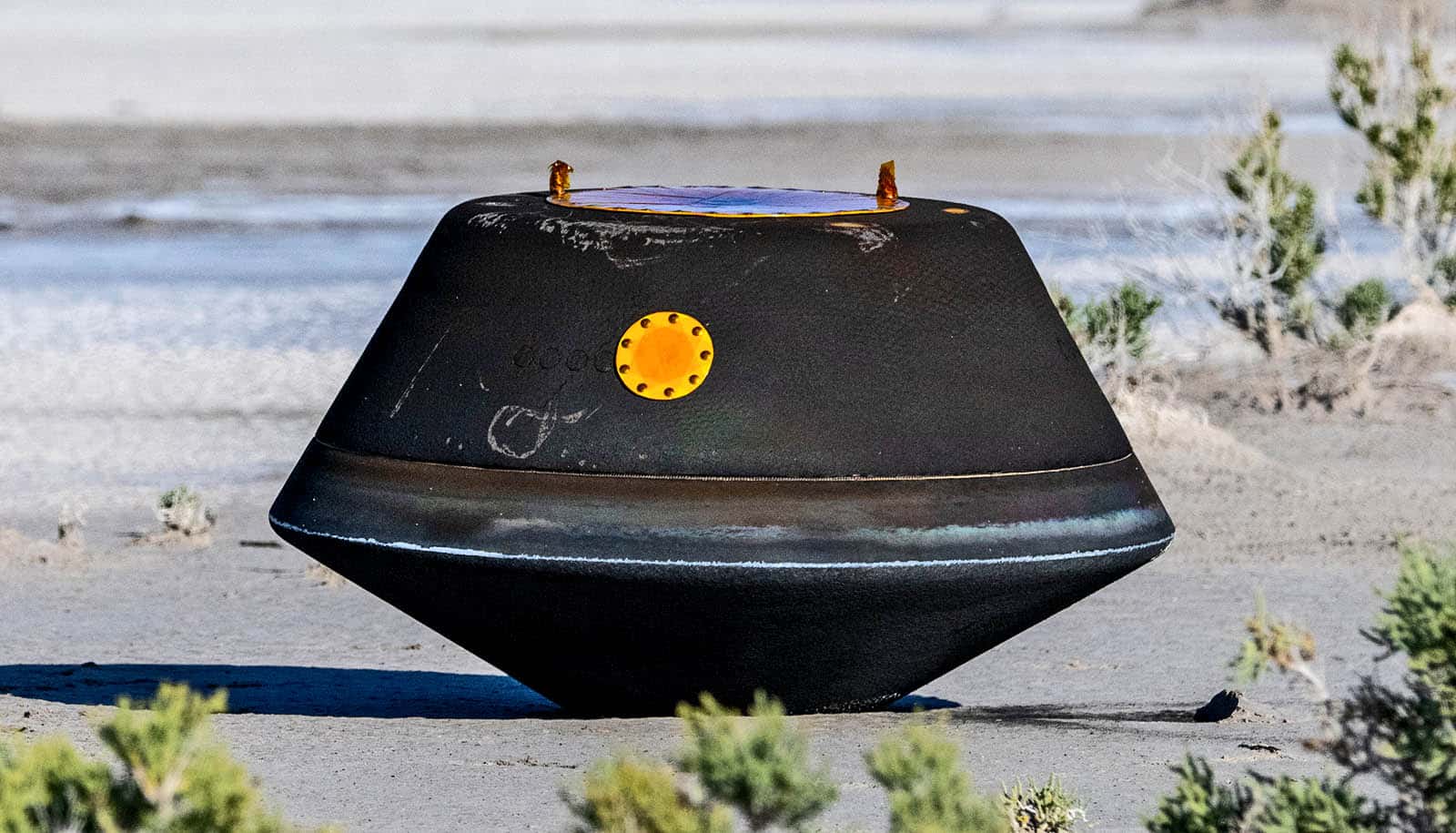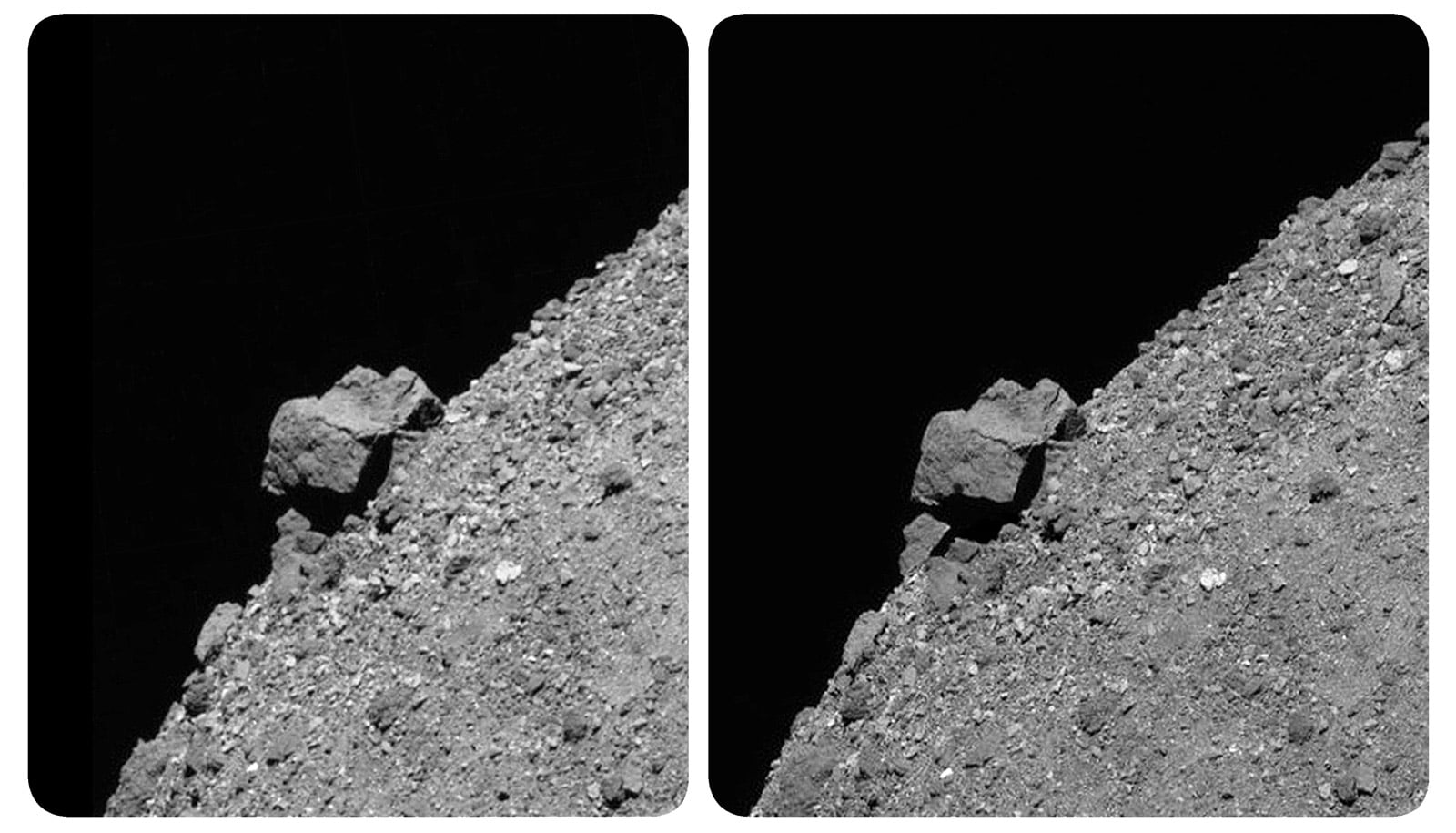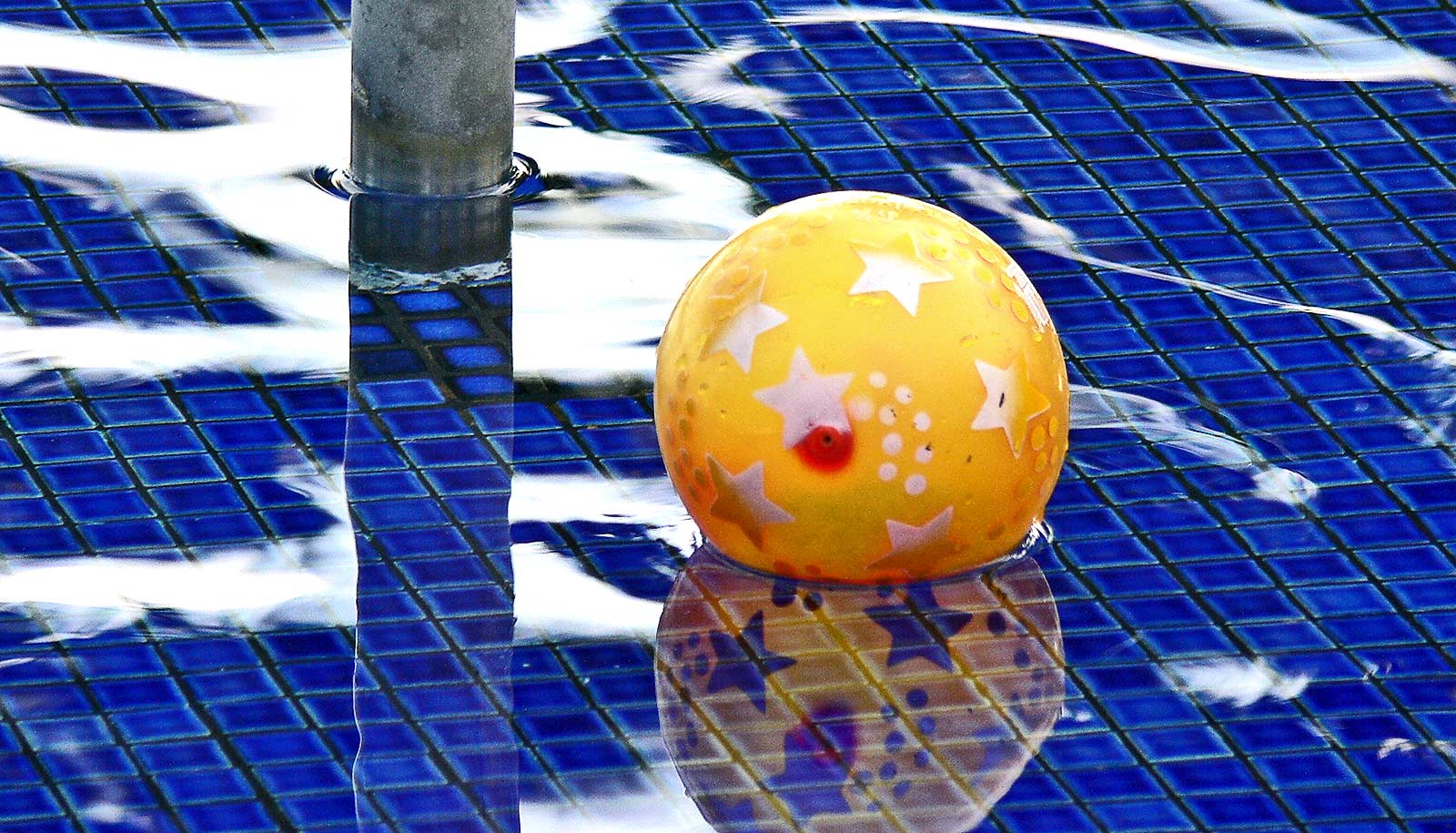The NASA OSIRIS-REx mission has successfully landed a capsule with rocks and dust from the asteroid Bennu in the Utah desert.
The capsule landed at 8:52 am Mountain Daylight Time—on September 24 in a targeted area of the Department of Defense’s Utah Test and Training Range, or UTTR, 80 miles southwest of Salt Lake City.
Dante Lauretta, principal investigator for OSIRIS-REx at the University of Arizona, was among the first people to approach the sample return capsule after it landed.
“It was like seeing an old friend that you hadn’t seen for a long time,” Lauretta said during a post-landing press conference hosted by NASA at UTTR. “I did want to give it a hug.”
“Boy, did we stick that landing…”
Remembering the late Michael Drake, Lauretta says his former mentor and head of the University of Arizona Lunar and Planetary Laboratory who first came up with the mission concept “would have been proud today.”
“I was there when the capsule was nothing but a PowerPoint on a slide in a proposal that we were submitting to NASA,” Lauretta says. “It was amazing and emotional.”
The capsule didn’t bounce, didn’t skid, made only a tiny divot, and came to rest gently, tipped on its side, Lauretta says.
“Boy, did we stick that landing and that is pretty much what OSIRIS-REx has done consistently.”
Within an hour and a half, the capsule was transported by helicopter to a temporary clean room set up in a hangar on the training range, where it now is under supervision and connected to a continuous flow of nitrogen.
Getting the sample under a “nitrogen purge,” as scientists call it, was one of the OSIRIS-REx team’s most critical tasks today. Nitrogen is a gas that doesn’t interact with most other chemicals, and a continuous flow of it into the sample container inside the capsule will keep out earthly contaminants to leave the sample pure for scientific analyses.
The Bennu sample—an estimated 8.8 ounces, or 250 grams—was transported in its unopened canister by aircraft to NASA’s Johnson Space Center in Houston on September 25. Curation scientists there will disassemble the canister, extract and weigh the sample, create an inventory of the rocks and dust, and, over time, distribute pieces of Bennu to scientists worldwide.
The sample collected from Bennu will help scientists make discoveries to better understand planet formation and the origin of organics and water that led to life on Earth, as well as benefit all of humanity by learning more about potentially hazardous asteroids.
The delivery of an asteroid sample—a first for the United States—went according to plan thanks to the massive effort of hundreds of people who remotely directed the spacecraft’s journey since it launched on September 8, 2016. The team then guided it to arrival at Bennu on December 3, 2018, followed by the search for a safe sample-collection site in 2019 and 2020, sample collection on October 20, 2020, and the return trip home starting on May 10, 2021.
“Congratulations to the OSIRIS-REx team on a picture-perfect mission—the first American asteroid sample return in history—which will deepen our understanding of the origin of our solar system and its formation,” says NASA Administrator Bill Nelson.
“Not to mention, Bennu is a potentially hazardous asteroid, and what we learn from the sample will help us better understand the types of asteroids that could come our way. With OSIRIS-REx, Psyche launch in a couple of weeks, DART’s one-year anniversary, and Lucy’s first asteroid approach in November, Asteroid Autumn is in full swing.
“These missions prove once again that NASA does big things. Things that inspire us and unite us. Things that show nothing is beyond our reach when we work together.”
“For us, this was the World Series, ninth inning, bases-loaded moment, and this team knocked it out of the park.”
The University of Arizona leads the OSIRIS-REx’s science team and science observation planning and data processing. NASA Goddard provides overall mission management, systems engineering, and the safety and mission assurance.
After traveling billions of miles to Bennu and back, the OSIRIS-REx spacecraft released its sample capsule toward Earth’s atmosphere at 3:42 am Mountain Standard Time. The spacecraft was 63,000 miles, or 102,000 kilometers, from Earth’s surface at the time—about one-third the distance from Earth to the moon.
Once the spacecraft jettisoned the capsule, it officially began its extended mission, OSIRIS-APEX, to study and map another potentially hazardous near-Earth asteroid, called Apophis. Dani DellaGiustina, planetary sciences assistant professor and OSIRIS-REx deputy principal investigator will serve as principal investigator for OSIRIS-APEX.
Traveling at 27,650 mph (44,500 kph), the capsule pierced the atmosphere at 7:42 am MST, off the coast of California at an altitude of about 83 miles (133 kilometers). Within 10 minutes, it landed on the military range. Along the way, two parachutes successfully deployed to stabilize and slow the capsule down to a gentle 11 mph (18 kph) at touchdown.
“The whole team had butterflies today, but that’s the focused anticipation of a critical event by a well-prepared team,” says Rich Burns, project manager for OSIRIS-REx at NASA’s Goddard Space Flight Center in Greenbelt, Maryland. “For us, this was the World Series, ninth inning, bases-loaded moment, and this team knocked it out of the park.”
“We now have the unprecedented opportunity to analyze these samples and delve deeper into the secrets of our solar system.”
Radar, infrared, and optical instruments in the air and on the ground tracked the capsule to its landing coordinates inside a 36-mile by 8.5-mile (58-kilometer by 14-kilometer) area on the range. Within several minutes, the recovery team was dispatched to the capsule’s location to inspect and retrieve it. The team found the capsule in good shape at 8:07 am MST and then determined it was safe to approach. Within 70 minutes, they wrapped it up for safe transport to the clean room on the range.
Even with a series of rehearsals preceding today’s capsule recovery operations, Lauretta says there were heart-pounding moments during the helicopter ride out to the landing area, and he admits he was mentally preparing himself for the worst-case scenario—a hard landing in the event the main parachute had not opened as planned. It was hard to hear the status updates, he says, and he did not have access to NASA’s live video feed.
“I told myself, ‘You’ve got to keep it together when you get out of this helicopter, deal with whatever is there and then mourn if that’s what you are going to have to do,'” Lauretta says.
“As soon as I heard ‘main chute,’ that’s when I just emotionally let it go,” he adds. “Tears were streaming down my eyes, and I thought, ‘That’s the only thing I needed to hear.’ From this point on, we know what to do, we’re home, we’re safe, we did it.”
According to Lauretta, today marks an extraordinary milestone not just for the OSIRIS-REx team but for science as a whole.
“Successfully delivering samples from Bennu to Earth is a triumph of collaborative ingenuity and a testament to what we can accomplish when we unite with a common purpose,” he says. “But let’s not forget–while this may feel like the end of an incredible chapter, it’s truly just the beginning of another. We now have the unprecedented opportunity to analyze these samples and delve deeper into the secrets of our solar system.”
Source: University of Arizona



